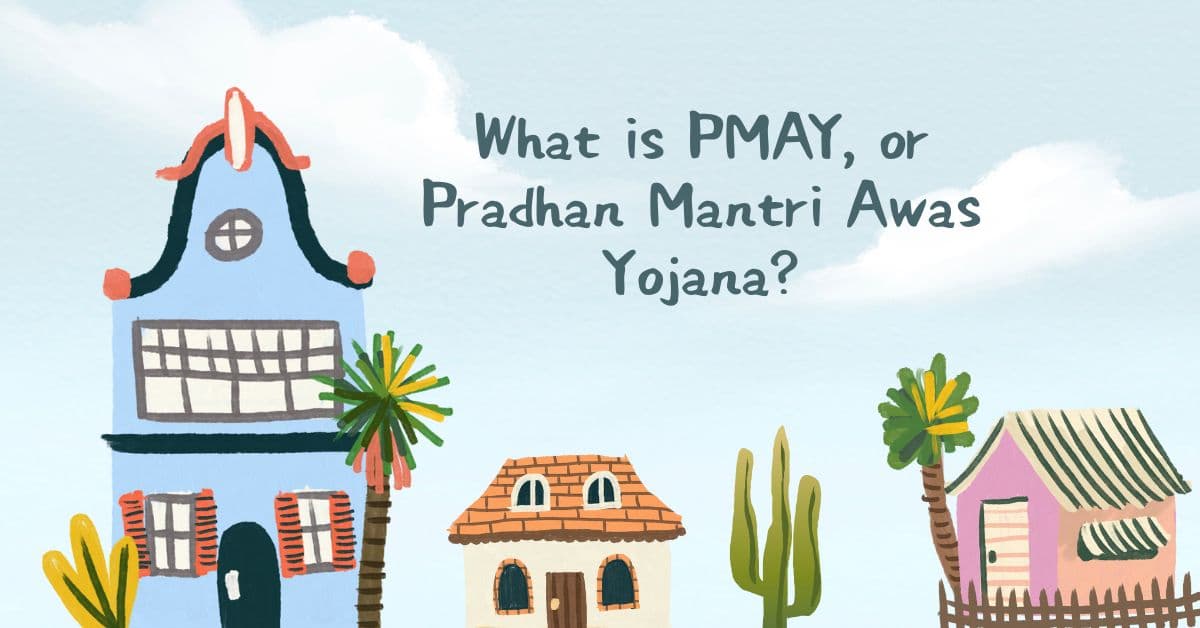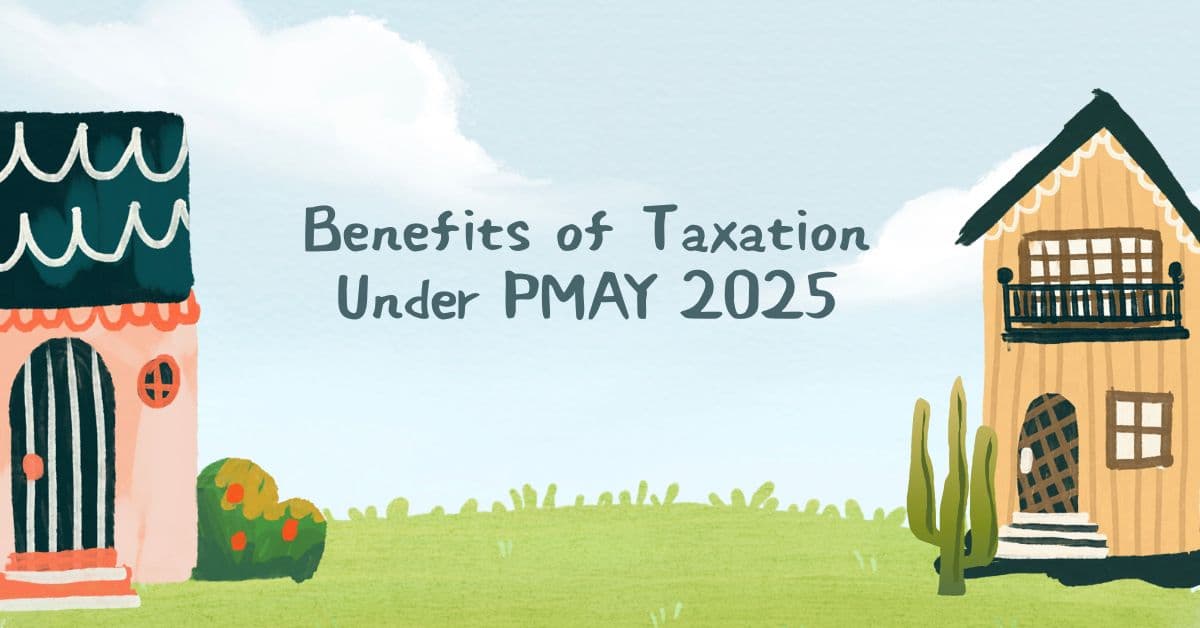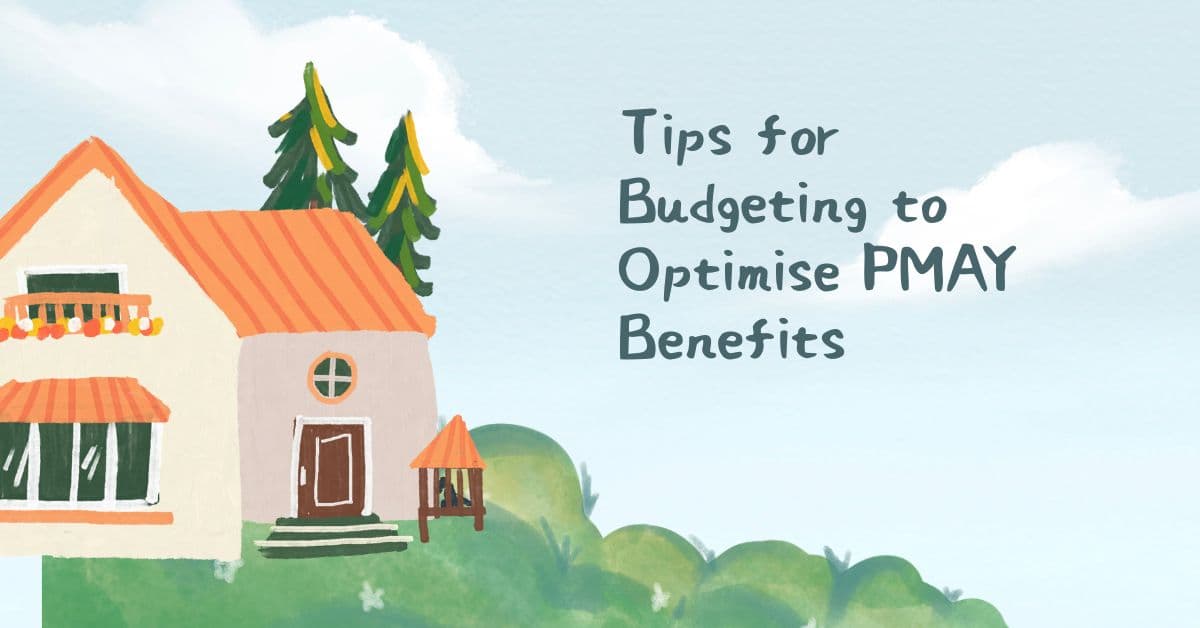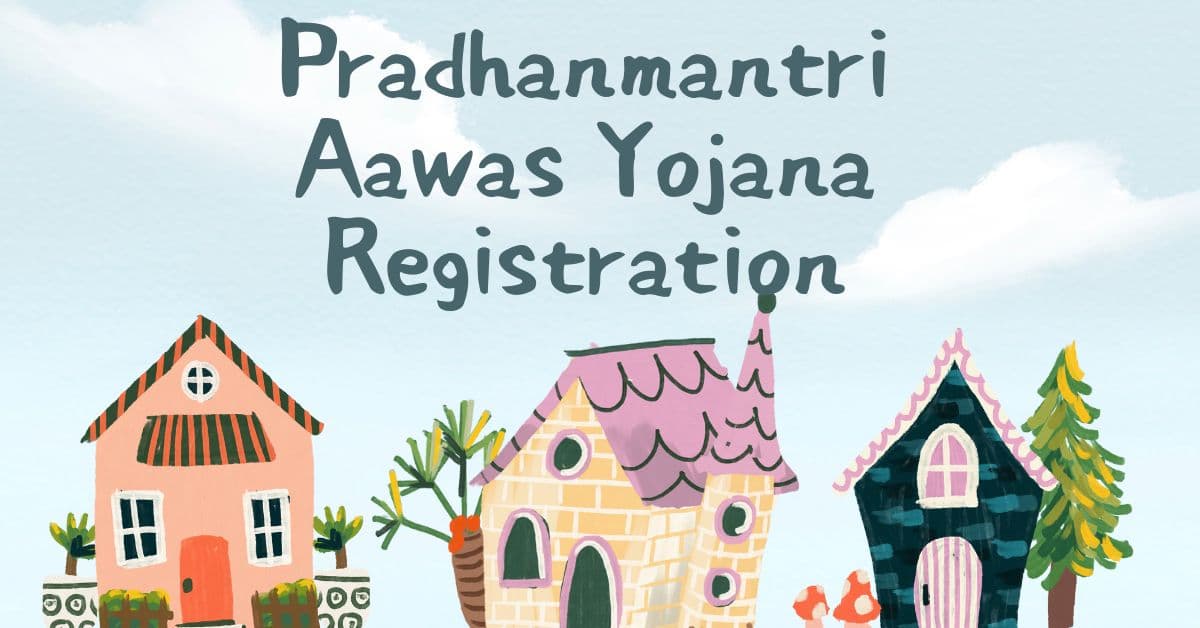Pradhanmantri Aawas Yojana Registration: The Pradhan Mantri Awas Yojana (PMAY), a flagship program of the Indian government, was introduced in 2015 with the goal of providing affordable housing to the impoverished in both urban and rural areas. According to the Union Budget 2024, 3 crore more homes are to be built by 2029. According to BankBazaar, 2.69 crore of the 3.34 crore approved homes as of May 19, 2025, were finished under PMAY-Urban and PMAY-Gramin. Given the country’s 2 crore+ demat accounts, 100 crore+ UPI users, and growing expenses (metro rent: ₹15,000–₹30,000, inflation: 4–6%), PMAY provides tax benefits (up to ₹2.5 lakh annually for MIG, low-income groups (LIG), and economically weaker sections (EWS) with financial aid (₹1.2–1.3 lakh for rural, up to ₹2.67 lakh subsidy for urban). According to Financial Express, applications for PMAY-Urban 2.0 are still being accepted till December 2025.
This guide describes eligibility, tax benefits, PMAY registration in 2025, and practical methods to obtain a pucca home. It gives salaried workers, rural households, and urban migrants in Tier-2 locations like Patna, Delhi, or Mumbai the ability to claim subsidies, save money on taxes, and become homeowners. It is packed with India-specific information, budgeting advice, and tools.
What is PMAY, or Pradhan Mantri Awas Yojana?
Through the construction of pucca houses with basic services (water, electricity, toilet, kitchen) for homeless families and those living in kutcha or decaying dwellings, PMAY, which was introduced by Prime Minister Narendra Modi on June 25, 2015, seeks to offer “Housing for All.” According to ClearTax, it consists of two parts:

- PMAY-Urban (PMAY-U): Targeting the urban poor (EWS, LIG, and MIG) in 4,041 towns, PMAY-Urban (PMAY-U) provides subsidies through the Credit Linked Subsidy Scheme (CLSS), which offers a 6.5% interest subsidy on housing loans up to ₹9 lakh. According to BankBazaar, 1.12 crore residences are planned as of February 2025, with ₹2.2 lakh crore set aside for 1 crore urban homes by 2029.
- PMAY-Gramin (PMAY-G): Rural families are the focus of PMAY-Gramin (PMAY-G) (BPL, SECC 2011), which offers ₹1.2 lakh (plains) or ₹1.3 lakh (hilly regions) in three installments. According to BankBazaar, 2.69 crore of the 3.79 crore homes that had been allocated have been finished by February 2025.
Context: According to Forbes India, PMAY empowers women (70% of homes are in female or joint names) and marginalised groups (SC, ST, and OBC) in Bihar, Uttar Pradesh, and metro areas, with 70% of 1.4 crore weddings including home purchases and 17,000+ SBI branches facilitating loans.
Tax Benefits: According to ClearTax, CLSS eligible individuals can save up to ₹2.5 lakh a year through Section 80C (₹1.5 lakh on capital) and Section 24 (₹2 lakh on interest).
2025 Update: According to onlineupdatestm.in, PMAY-U 2.0, which was announced in Budget 2024, will spend ₹10 lakh crore for one crore urban dwellings. Registration will be open till December 2025.
Why Sign Up for 2025 PMAY?
Registering for PMAY allows families with escalating expenditures (rent: ₹15,000–₹30,000, EMIs: ₹20,000–₹50,000) to access financial help, tax savings, and homeownership. Important advantages include:
- Financial Aid: According to Bajaj Finserv, loan loads are decreased by ₹1.2–1.3 lakh (PMAY-G) or up to ₹2.67 lakh subsidies (PMAY-U CLSS).
- Tax Savings: According to Policybazaar, EWS/LIG/MIG deductions of ₹1.5 lakh (principal, Section 80C) and ₹2 lakh (interest, Section 24) are available.
- Women Empowerment: According to pmawasgraminlist.org, 70% of homes are assigned in female or joint names, demonstrating the empowerment of women.
- Eco-Friendly Homes: According to rdd.maharashtra.gov.in, eco-friendly homes are made of sustainable materials and have a minimum size of 25 square meters (PMAY-G).
- Convergence: According to ClearTax, connections with Saubhagya (electricity), Ujjwala (LPG), and Swachh Bharat (toilets).
- Priority Groups: according to BankBazaar, elderly, those with disabilities, OBC, and SC/ST people are given precedence.
Context: According to the RBI, households in Bangalore, Patna, or rural Gujarat utilise PMAY to finance houses (₹20–50 lakh) with ₹6.81 lakh crore in digital transactions and 2 crore+ SIP accounts.
Risk of Delay: According to Financial Express, missing the PMAY-U 2.0 deadline (December 2025) might cause subsidies to be delayed because finances are limited.
Eligibility for PMAY Registration in 2025
PMAY-City
Revenue:
- EWS: Up to 3 lakh rupees annually.
- LIG: ₹3-6 lakh annually.
- Annual MIG-I: ₹6–12 lakh.
- MIG-II: 12 to 18 lakh per year, according to Bajaj Finserv.
Property: A pucca home in India cannot be owned by the applicant or their family.
Category: According to pmay-urban.gov.in, these categories include slum dwellers, EWS, LIG, MIG, SC/ST, OBC, women, people with disabilities, and elderly.
Loan: CLSS subsidies are available for loans with a maximum tenure of 20 years and up to ₹9 lakh (MIG-I) or ₹12 lakh (MIG-II).
PMAY-Gramin
- Income: According to gecsamastipur.org.in, monthly income is ≤₹15,000 (updated 2024).
- Housing: Living on the streets or in decrepit or kutcha homes (mud/straw walls, 1-2 rooms).
- Priority: according to BankBazaar, women-headed families, SC/ST, handicapped people, and SECC 2011-listed households.
- Assets: According to gecsamastipur.org.in, owning a motorbike, refrigerator, or air conditioner is permitted (new rule).
Context: According to the RBI, urban professionals in Mumbai (earning ₹5–10 lakh annually) and rural households in Bihar (earning ₹1-2 lakh annually) are eligible, and they use Aadhaar for KYC.
Benefits of Taxation Under PMAY 2025
According to ClearTax, the PMAY Credit Linked Subsidy Scheme (CLSS) provides tax savings:

- Section 80C: Up to ₹1.5 lakh can be deducted from the principle of a housing loan.
- Section 24: Home loan interest deduction of up to ₹2 lakh (₹2.5 lakh for first-time buyers).
- Section 80EEA: According to Policybazaar, Section 80EEA provides an extra ₹1.5 lakh interest deduction for loans up to ₹45 lakh (EWS/LIG, till December 2024, probably extended).
- For instance, according to Bajaj Finserv, a ₹6 lakh loan for LIG at a 6.5% subsidised rate saves ₹2.67 lakh (subsidy) + ₹2 lakh (interest deduction) = ₹4.67 lakh overall.
Context: According to Forbes India, Tier-2 households (₹2–5 lakh) and Metro families (taxable income: ₹5–15 lakh) make the most of their savings using ClearTax tools.
How to Sign Up for 2025 PMAY
PMAY-U 2.0 Online Registration
- Visit Portal: According to BankBazaar, visit pmaymis.gov.in.
- Citizen Assessment: Under “Citizen Assessment” (EWS/LIG/MIG), choose “Apply Online.”
- Enter the following information: Give your Aadhaar number, bank account information, income details, and personal information (name, age, and address) in accordance with Paytm.
- Submit: Upload documents, then click “Submit.” To monitor status, take note of the Assessment ID.
- Verification: According to pmawasgraminlist.org, authorities confirm by income proofs (urban) or SECC 2011 (rural).
- Track Status: According to Bajaj Finserv, use your Assessment ID or Aadhaar to check at pmaymis.gov.in.
Registration Offline
- Locate CSC: To find a CSC, go to a State Nodal Agency or Common Service Centre (CSC), according to Paytm.
- Get Form: Visit pmaymis.gov.in to download the PMAY form for free.
- Fill Out Information: Enter your bank account information, income, Aadhaar, and personal information.
- Submit: Pay ₹25 plus GST and submit the necessary paperwork in accordance with BankBazaar.
- Track: According to onlineupdatestm.in, use the receipt number to verify the status at CSC.
Required Documents
- Identity: voter ID, PAN, and required Aadhaar card, according to gecsamastipur.org.in.
- Income: SECC 2011 listing (rural), ITR (urban), or salary slips.
- Residence: Utility bill, ration card.
- Bank: Passbook, account information.
- Additional requirements: MGNREGA employment card (if applicable), passport-size photo, as stated on pmawasgraminlist.com.
- Urban CLSS: Letter of approval for a home loan (if requesting a subsidy).
Context: According to the RBI, urbanites in Delhi apply through HDFC, whereas rural applicants in Uttar Pradesh utilise SBI’s 17,000+ branches for Aadhaar-linked accounts.
Deadline: According to Financial Express, applications for PMAY-U 2.0 are accepted through December 2025. According to Jjmup.org, PMAY-G listings are updated once a year.
Tips for Budgeting to Optimise PMAY Benefits
The following are ways to take advantage of PMAY tax breaks and subsidies on a monthly budget of ₹10,000 to ₹50,000:

1. Submit an Early Application
- Why: According to onlineupdatestm.in, delays might result in the loss of subsidies due to limited funding (₹2.2 lakh crore for PMAY-U 2.0).
- How: To secure funds, register at pmaymis.gov.in before June 2025, according to Paytm.
- Tip: According to Forbes India, use Groww’s Budget Planner to set aside money for application expenses.
Context: Patna families with annual incomes between ₹2 and ₹5 lakh apply through CSC facilities.
2. Apply the Rule of 50/30/20
- Rent (₹15,000), food (₹5,000), and EMIs (₹10,000) make up 50% of needs.
- 30% of the wants are travel, OTT, and dining (₹7,500).
- 20% Investment/Savings: ₹5,000 (₹3,000 FD, ₹2,000 PMAY loan repayment).
Example Plan (Monthly Salary: ₹50,000):
- Requirements: ₹25,000 for utilities and rent.
- Desires: ₹15,000 for lifestyle.
- Savings: ₹10,000 (₹2,000 SGB, ₹5,000 emergency fund, and ₹3,000 house loan EMI).
- Result: According to ClearTax, a ₹6 lakh loan with a ₹2.67 lakh subsidy pays off in 15 years and saves ₹2 lakh in taxes.
- Use ZeeMoney to keep tabs on your spending, according to ClearTax.
Context: In Uttar Pradesh, joint families save ₹10,000 each month and use PMAY to finance homes worth ₹20 lakh.
3. Integrate with mortgages
- How to Apply: SBI, HDFC, or Bajaj Finserv (8.25% p.a., 32-year duration) are the options for applying for loans (₹6–12 lakh), according to Bajaj Finserv.
- For instance, according to BankBazaar, a ₹9 lakh loan for MIG-I at 4% subsidy saves ₹2.3 lakh + ₹1.5 lakh in tax deductions.
- Tip: According to Forbes India, use BankBazaar’s EMI Calculator to schedule repayments.
Context: PMAY is paired with loans from professionals in Bangalore (paying ₹10 lakh year).
4. Examine the list of beneficiaries
- How: According to pmawasgraminlist.org, go to pmayg.nic.in (Gramin) or pmaymis.gov.in (Urban), choose “Stakeholder” or “Search Beneficiary,” and input your Aadhaar or registration number.
- Advice: According to onlineupdatestm.in, get the 2025 list (updated April 25, 2025) at rhreporting.nic.in.
Context: According to Jjmup.org, rural Bihar families check through CSC facilities.
5. Spread Out Your Savings
- Why: According to ClearTax, loan EMIs (₹10,000–₹20,000) require backup funds.
- How: Set aside 30% for mutual funds, 20% for PMAY loans, 20% for gold (SGBs: 2.5% interest), and 30% for FDs (SBI: 7%).
- For instance, a ₹20,000 budget would include ₹6,000 for FD, ₹4,000 for SGB, ₹4,000 for loan EMI, and ₹6,000 for Quant Small Cap Fund.
- Tip: According to the NSE, if you’re looking for investing opportunities, use Market Watch.
Context: Groww is used for diversification by Tier-2 investors in Jaipur.
6. Track the Status of Your Application
- How: According to Bajaj Finserv, use your Assessment ID or Aadhaar to visit pmaymis.gov.in or pmayg.nic.in.
- Advice: Visit SBI offices or call the toll-free 1800-11-6446 (PMAY-U), according to BankBazaar.
Context: Rajasthan’s rural candidates benefit from Hindi applications like Angel One.
7. Manage Risks
- Verify Eligibility: According to rdd.maharashtra.gov.in, cross-check SECC 2011 data via Gramme Panchayat.
- Avoid Scams: According to rural.gov.in, be wary of fraudulent schemes (such as “NRDRM”).
- Advice: According to ClearTax, consult SEBI-registered experts through Vakilsearch (₹2,000–₹5,000).
Context: Families in rural Uttar Pradesh seek advice from PNB’s 7,000+ branches.
Risks of Not Registering
- Missed Subsidies: According to onlineupdatestm.in, if you wait till December 2025, you might lose ₹2.67 lakh (in an urban area) or ₹1.3 lakh (in a rural one).
- Increasing Costs: According to Forbes India, home prices (₹20–50 lakh) are higher than inflation (4–6%).
- Loan Burdens: According to Bajaj Finserv, EMIs (₹20,000–₹50,000) put a burden on budgets in the absence of CLSS.
- Tax Losses: According to Policybazaar, missing ₹2.5 lakh in deductions raises tax liabilities.
- Housing Shortage: According to pmay-urban.gov.in, demand for urban housing (1.12 crore houses) is higher than availability.
Answers:
- Apply by June 2025 at pmaymis.gov.in.
- To plan your taxes, use ClearTax.
- According to Reddit, join r/IndiaInvestments for advice.
Context: In order to obtain cash, Tier-2 families in Bhopal utilise SBI ATMs; they require Hindi resources such as Groww.
Resources and Tools
- Portals: for registration and status are pmaymis.gov.in (Urban) and pmayg.nic.in (Gramin).
- Budgeting apps: for tracking expenses include Groww, ZeeMoney, and ClearTax.
- BankBazaar and Bajaj Finserv are loan calculators for EMI planning.
- Tax Tools: Section 80C/24 deductions using ClearTax.
- Learning resources: include YouTube (CA Rachana Ranade), SEBI, and NSE India.
- Community: CSC centres, Zerodha University, and r/IndiaInvestments.
Context: According to the RBI, accessibility is guaranteed by more than 17,000 bank branches (SBI, PNB) and 100 crore UPI users.
Conclusion
According to BankBazaar, the Pradhan Mantri Awas Yojana (PMAY) in 2025, which would cost ₹10 lakh crore for three crore dwellings, will provide ₹1.2–2.67 lakh in subsidies and up to ₹2.5 lakh in tax advantages for the construction of pucca homes. Register by December 2025 at CSC centres or pmaymis.gov.in, provide evidence of income and Aadhaar, and obtain loans from SBI or HDFC. Utilise ClearTax to reduce taxes, check the 2025 beneficiary list on pmayg.nic.in, and control EMIs using the 50/30/20 rule. PMAY gives households in Delhi, Patna, or rural Uttar Pradesh the ability to fund houses (₹20–50 lakh) and defy inflation thanks to its 2 crore+ demat accounts and Sensex at 82,530.74. Take action immediately to get your advantages and construct the house of your dreams.
Call to Action: Check your eligibility on Groww, apply for PMAY-U 2.0 at pmaymis.gov.in, and share your experience in comment!
Rafale Jet Price: Navigating Tax Strategies in High-Value Deals
Home Loan Interest Rates of HDFC Bank Drop – Will Your EMI Go Down?
LIC Cancellation Form: Here’s the Tax Strategy You Need in 2025

